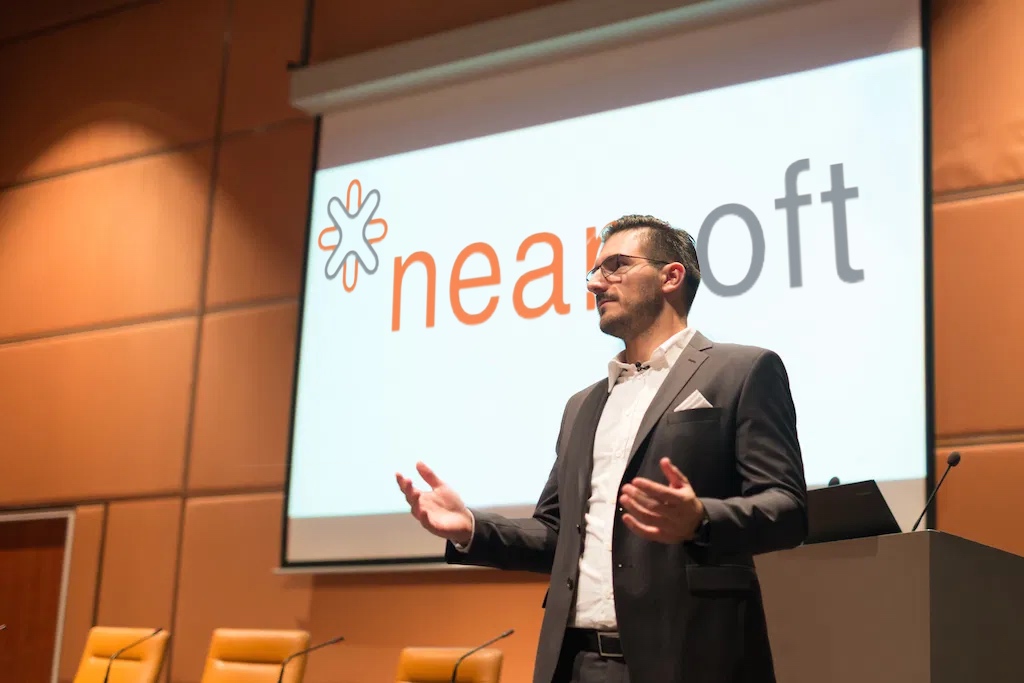Why Leaders Struggle to Foster a Culture of Responsibility

Freedom and responsibility are two sides of the same coin. When people do not live up to your expectations, it is tempting to try to increase control. Unfortunately, the more you try to control people, the less responsible they become.
A few years ago, one factory in the U.S. was losing about $1 million a year because of employee theft. Theft became the company norm – people were taking equipment from the factory, even if they didn’t need it.
Management installed video surveillance and threatened reprisals. This made stealing even more exciting for employees. It took a change of mindset to bring theft down to almost zero. Instead of trying to control people, the company chose freedom.
It costs more to mistrust people than to risk trusting them
By installing cameras and intimidating people, management viewed all employees as thieves. Thus, adding fuel to the fire.
The plant hired an organizational psychologist to uncover the root cause. After interviewing people, Gary Latham realized that employees were stealing just for fun.
Latham’s advice was not to punish people, but to kill the excitement. He devised an effective and ingenious policy: “Employees can take equipment from the plant anytime they want.”
By making it official to take equipment out of the factory, the excitement faded. The past was forgotten, and trust was restored. Employees were able to return previously “borrowed” equipment without question.
Your company norms say a lot about your assumptions about people – the more you control, the less you trust them.
Cynical managers control, withhold information and create restrictive policies, undermining trust and engagement.
Because employees don’t trust the companies they work for, employers must take the first step and restore trust with their employees.
As Stephen M. R. Covey wrote in his book “The Speed of Trust. What Changes Everything: “When trust falls, so does speed, and with it, costs. The opposite is also true: when trust goes up, costs go down and speed goes up.
Don’t kill freedom, change your mindset
Most managers find it risky and foolish to create a culture of freedom without top-down control, especially when it comes to money. The choice between trust and control is not discussed on a rational level. It is a decision that leaders make based on unconscious assumptions about people and their motives.
To create a culture of trust and freedom, clearly state all the assumptions under which your organization operates. Be prepared to be caught off guard.
This is exactly what happened to Dennis Bakke, founder and CEO of the Fortune 500 AES, when he realized how employees were treated at his company:
Lazy – if they’re not looked after, they won’t do their jobs.
Selfish – they put their own interests above those of the organization.
Unable to make good decisions – so bosses have to make them.
They need to be told what to do, how and when – without bosses there is no accountability.
Sounds harsh, doesn’t it? But that’s probably how most managers around the world feel about their employees. And this distrust hurts not only morale and productivity, but also self-esteem.
Most companies operate on the principle, “Only the work I’ve been rewarded for is done.” That’s why they try hard to increase accountability. Managers use perks, raises and bonuses to motivate people, but carrots and sticks are ineffective in increasing accountability.
Commitment, skill, and autonomy are the best ways to reward your team. Intrinsic motivation is more effective than extrinsic motivation.
Mastery is the desire to improve. Seeing our unlimited potential motivates us to learn and practice.
A common goal drives people; they want to be part of something bigger than themselves. However, people want autonomy to achieve their goal in the best way possible.
Existential philosophy asserts that freedom is fundamental to human existence. We are autonomous and like to make our own choices rather than follow orders.
With freedom comes responsibility. People are responsible for their choices. Managers cannot motivate people. However, they can create the right conditions to make participants feel motivated.
Creating a culture of freedom and responsibility starts with changing the corporate mindset. Here’s how AES management has defined a new set of norms for its employees:
Creative, thoughtful, trustworthy adults capable of making important decisions.
Responsible for decisions and actions.
Make mistakes.
Unique.
Use their talents and skills to contribute to the organization and the world.
Treat people the way they want to be treated, not based on your assumptions.
How to balance freedom and responsibility in your organization
Every organization has its own culture. Be willing to experiment and see what your team likes. Instead of copying what others are doing, create a structure that works for your organization. Use the following ideas as inspiration.
Avoid a one-size-fits-all approach.
You can’t impose freedom. Instead of developing a one-size-fits-all plan for the entire organization, let managers think about what works best for their teams. Give them the freedom to work with their colleagues on how to approach freedom.
At Decathlon, the CEO understands that a culture of freedom is a philosophy, not a rigid model. Each of the business units of this sporting goods retailer with 80,000 employees work together to create their own unique culture of freedom and responsibility.
Agree on a mission, give freedom.
A common purpose brings people together. When everyone is part of something bigger than themselves, freedom seems less risky.
Morning Star employees have no boss. The mission is their boss. People can act and make decisions without the approval of a boss. They just make sure that whatever they do is in line with their purpose.
Freedom requires discipline.
Eliminating restrictive policies and spreading power does not mean that your culture becomes public. You need to establish clear priorities, expected behaviors, and what is encouraged and rewarded. You need a framework to create a culture of freedom.
Netflix took several years to build a culture of freedom and responsibility. The leadership team relentlessly identified expected behaviors, fostered discipline in following them, and consistently communicated them.
Establish peer-to-peer systems
Creating a culture of freedom is not a universal approach. Self-managed organizations have systems that provide some structure. It’s not about eliminating control, it’s about creating collective responsibility.
At 10 Pines, people make decisions about their paychecks. At this Argentine software company, employees can apply for raises. However, every offer is openly and vehemently discussed. People will think twice before asking for a raise they can’t justify to their colleagues.
Take the first step.
In most organizations, you have to earn credibility. Many perks and bonuses depend on your tenure – the longer you work there, the more trustworthy you become. While this is an established rule, it doesn’t make any sense.
Atlassian offers a “Pre-Employment Holiday” for all new hires. People get a vacation voucher to recuperate before they start their new job. People are trustworthy; that’s why they were hired. An Australian software company has taken employee trust to a new level.
Turn managers into mentors
A culture of freedom and responsibility doesn’t require controlling people. Managers’ role should shift from supervising people to mentoring them.
At one Michelin plant, teams are self-organized, with managers acting as coaches. Operators can set their own work schedules, supervise their own work, take vacations without approval, etc. As a result, the global tire manufacturer has doubled its free cash flow since 2015.
Create a conflict management system
Disputes and conflicts usually end up on the desks of HR or managers. This entrenched habit exacerbates the situation. Managers end up resolving most conflicts rather than encouraging people to resolve them themselves.
At Morning Star, the world’s largest producer of tomato products, people cannot use force against others. The conflict resolution process encourages two dissenters to sit down together and work things out. If they can’t find a solution, they find a third colleague they both trust to help them. This mediator facilitates the discussion rather than imposing a solution. If mediation doesn’t work, a panel meets.
Focus on the outcome.
Micromanagement is more common than we think. The pandemic has only made things worse, making managers tempted to engage in petty management of remote employees.
As Timothy Clark explains, there are three levels of responsibility: task, process, and outcome. Organizations with low levels of psychological safety focus on tasks or processes – supervisors control people on a micro level. On the other hand, companies with high levels of trust focus on the outcome. They don’t track what people do or how many hours they work, but what they’ve already done.
Customize the counseling process
People don’t need empowerment; they need authority to make decisions and move forward without going through multiple levels of approval.
Buurtzorg’s CEO uses social media to get the opinions of his 9,000 employees before making company-wide decisions. Within 24 hours, his posts receive dozens and sometimes hundreds of comments to inform his analysis. Similarly, Netflix’s informed captains have complete freedom, but must consult with those affected. It is up to the captains to decide whether or not to adjust their ideas based on people’s feedback.
Increase trust to increase accountability
Trust is a two-way street, but someone has to take the first step.
Start by rethinking your assumptions about people. Do you think your employees are thieves, lazy, and selfish? Or are they hardworking, reliable and trustworthy?
What about your company’s rules and regulations? Do you treat people as adults or children? Do the rules promote autonomy or control?
Creating a culture of freedom is not about eliminating responsibility, but about replacing a command-and-control approach with a system. Instead of imposing accountability, create a culture of shared responsibility.
If you doubt people, trust the system. It will always self-correct.













